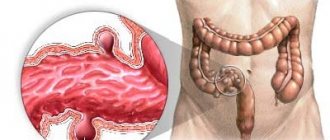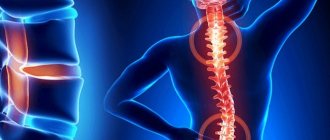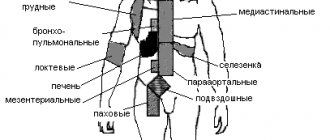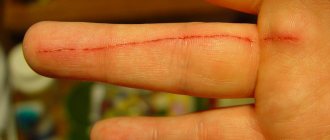Unpleasant in appearance and bitter in taste, bile was perceived by many peoples in the past as the cause of a person’s bad character. There is indeed some truth in this: diseases of the gallbladder may well poison the life of a person and everyone around him at the same time. But under normal conditions, bile performs a number of important functions in the body, most of which are related to digestion.
It is this that creates an environment in the intestine that is favorable for pancreatic enzymes. With its help, cholesterol, bilirubin and a number of other substances that are not filtered by the kidneys are removed from the body. It activates enzymes necessary for the digestion of proteins. The acids it contains break down fats...
Bile is produced in the liver, some of it accumulates in the gallbladder. When a person eats, bile from the liver and gallbladder flows through the ducts into the small intestine. But sometimes problems arise with the evacuation of bile - it stagnates in the gallbladder. As a result, an inflammatory process develops in this organ - cholecystitis.
The causes of inflammation can be different, but the most common is the presence of stones in the gallbladder. Doctors call this form of the disease calculous cholecystitis. This is one of the types of gallstone disease.
Causes of the disease
The cause of the disease is a violation of the natural outflow of bile. The secretion stagnates, corrodes the walls of the gallbladder, blood supply to tissues deteriorates, pathogenic microflora is activated. When the bile ducts become clogged with a stone, the patient becomes inflamed.
Factors that increase the likelihood of disease:
- obesity;
- sudden weight loss;
- starvation;
- long-term parenteral nutrition;
- taking medications belonging to the category of synthetic hormones, antibiotics (contraceptives, estrogen- and progesterone-containing drugs, ceftriaxone).
The likelihood of occurrence and exacerbation of the disease is observed during pregnancy and childbirth. Risk factors also include advanced and middle age, hereditary predisposition, a history of diabetes mellitus, liver cirrhosis, Crohn's disease, etc.
Causes of acute phlegmonous calculous cholecystitis
The formation of stones in the gall bladder provokes acute phlegmonous calculous cholecystitis
The causes of this condition can be divided into two groups: those that provoke the appearance of stones and those that promote the accumulation of pus.
There are also factors that equally influence both of these processes. In general, stones play a dominant role in the formation of phlegmonous cholecystitis.
Reasons for their formation:
Types of diseases and their symptoms
There are acute and chronic calculous cholecystitis. In the chronic form, symptoms manifest themselves moderately, discomfort occurs in the acute phase.
The chronic form is characterized by the following symptoms:
- Drawing, aching and dull pain in the right hypochondrium. The pain can radiate to the lower back, under the shoulder blade, right shoulder, or side of the neck.
- Hepatic colic is a symptom of the onset of an exacerbation of the disease. The patient experiences acute cramping pain in the right hypochondrium.
- Due to intoxication with bile acids, the patient exhibits signs of jaundice: the sclera, skin and mucous membranes become yellow, the urine darkens, and the feces become discolored.
- Gastrointestinal disorders: unstable stool, heartburn, belching, vomiting, bitter taste.
- Low-grade fever.
Acute calculous cholecystitis begins when stones block the bile ducts. As a result of obstruction, an inflammatory process begins, which is accompanied by severe symptoms:
- sharp pain in the right side;
- nausea, bouts of vomiting;
- increased temperature;
- weakness.
In an acute process, the injured mucous membrane secretes a larger amount of fluid, stretching the walls of the bile duct. In this case, inflammation intensifies and the likelihood of a secondary infection increases. An untreated acute process either worsens or subsides, as a result of which the gallbladder tissue degenerates and it ceases to fully cope with its functions. This is how the patient develops chronic cholecystitis.
The disease is also classified depending on the nature of the inflammation. There are the following types:
- purulent;
- catarrhal - the patient complains of severe pain in the right side of the body;
- phlegmonous calculous cholecystitis manifests itself in the form of increased pain when coughing and changing body position;
- gangrenous - a dangerous form that develops from phlegmonous;
- mixed type.
Treatment
Non-surgical treatment. It is based on diet and medication. Patients with calculous cholecystitis refuse foods that lead to excessive secretion of bile and cause an exacerbation of the disease. Alcohol and carbonated water are completely excluded. The doctor prescribes hepatoprotectors, antispasmodics, enzymes, herbal medicines, antibiotics (if there is an infection). Treatment of chronic calculous cholecystitis is possible with small stones (up to 15 mm), consisting of cholesterol, and normal motor activity of the gallbladder.
Surgical treatment. Treatment is often carried out surgically. As a rule, the entire gallbladder is removed along with the stones. Depending on the indications, access can be carried out either laparoscopically or laparotomically. The operations are performed under general anesthesia.
To make an appointment at the ABC-Medicine clinic to clarify symptoms and treat chronic cholecystitis, call +7.
Medicines
Conservative treatment involves the use of broad-spectrum antibiotics (Norfloxacin, Cephalexin, Spiramycin) and intravenous administration of antispasmodics (No-Shpa, Papaverine, Spazmalgon).
To support digestive function, enzyme-containing supplements are used: Pancreatin, Mezim, Festal.
To support liver function, hepatoprotectors are indicated: Gepabene, Chofitol.
Doctors also recommend choleretic agents of natural origin Allochol, Cholenzym and sorbents Activated carbon, Atoxil, etc.
Risk factors
There are various forms of predisposition to the disease associated with individual characteristics, primary pathologies, nutrition and heredity. Doctors must take into account the presence of risk factors for cholecystitis during examinations.
Key risk factors:
- Female gender and age from 25 to 45 years.
- Obesity and significant weight loss over several months.
- Taking certain medications. In particular, the risk of developing inflammation in the gallbladder increases with the use of hormonal drugs.
- Pregnancy.
- Chronic diseases of the intestines, liver and pancreas.
- Surgical treatment of abdominal organs, trauma.
- Chronic foci of inflammation in different parts of the body.
- Long-term parenteral nutrition.
- Poor nutrition or prolonged fasting.
- Alcohol abuse.
- Myocardial infarction and other heart diseases.
- Vascular disorders in diabetes mellitus.
- Abnormal reflux of pancreatic secretions into the gallbladder (pancreatobiliary reflux).
- Insufficient physical activity.
Effective measures to prevent pathology are based on the elimination of risk factors and are associated with the patient’s lifestyle and individual medical history.
Popular questions about calculous cholecystitis
What is calculous?
The term means that the cause of an acute or chronic inflammatory process lies in stones formed inside the gallbladder.
How much water should you drink if you have cholecystitis?
During an attack, it is recommended to drink as much mineral water as possible without carbon. Water is especially useful after a bout of vomiting.
What can you eat with acute cholecystitis?
Doctors recommend limiting food intake and eating foods that do not cause increased bile secretion.
Diagnostics
Diagnosis of cholelithiasis is based on the clinical picture, as well as data obtained during an instrumental examination. To make a diagnosis with sufficient accuracy, it is enough to perform an ultrasound of the upper abdominal cavity. With its help, you can identify stones in the ducts, gall bladder, determine the size of the bladder, its walls, the condition of the pancreas and liver. Gastroduodenoscopy is also performed to determine the condition of the mucous membrane of the stomach, esophagus and duodenum. If there are complications, retrograde cholangiography or transgastric ultrasound of the bile ducts is prescribed to detect choledocholithiasis.
Symptoms of cholecystitis
The clinical picture depends on the form of development and course of the pathology. The disease is classified according to various criteria. According to the nature of the presence or absence of stones (conglomerates), cholecystitis is distinguished in medicine:
- Calculous - in the first stages of the disease, there are no symptoms of cholecystitis. With the formation of stones that injure the walls of the gallbladder, biliary colic and jaundice of the skin begin.
- Non-calculous - characterized by the absence of stones and severe pain.
Based on the nature of inflammation, intensity and frequency of pain, the following are distinguished:
- Catarrhal cholecystitis is an acute form of the disease, which is characterized by paroxysmal pain on the right side, radiating to the right forearm, collarbone, and scapula.
- Chronic cholecystitis - this type of disease is accompanied by aching, low-intensity pain, with periodic onset of nausea, vomiting, and bitterness in the mouth.
- Phlegmonous cholecystitis is a complication during the acute course of the disease, when purulent tissue infiltration and intoxication of the entire body are formed.
Treatment of acalculous cholecystitis
In the absence of complications (calculi), the disease is subject to conservative therapy. Treatment of chronic acalculous cholecystitis includes the use of medications to relieve inflammation, relieve unpleasant symptoms, and restore normal organ function. The basis of treatment is the following:
- drugs to improve the properties of bile;
- medications that normalize bladder tone;
- medications that relieve the inflammatory process.
The doctor selects antibiotics based on the results of bile tests. It is important to influence the cause, namely the bacterial flora that provoked the inflammation.
In 20% of cases, there is no improvement after conservative treatment. Then we are talking about planned surgical intervention.
Effective prevention of calculous prostatitis
Preventive measures for chronic calculous prostatitis come down to preventing exacerbations of the disease and stopping the process of stone formation. Generally accepted practice, as outlined in many national industry guidelines, currently includes:
- Regular intake of organotropic drugs from extracts of the prostate glands, since the drug affects the secretory function of the gland and normalizes secretion indicators such as total viscosity, protein content and mineral compounds, and also normalizes contractions of the walls of the ducts, completely eliminating the effect of reverse reflux;
- Regularly performed preventive prostate massage by a specialist. This makes it possible to normalize and maintain the contractile function of the prostate gland and improve the discharge of stagnant prostate secretions. Attention! If a diagnosis of calculous prostatitis has been made, prostate massage is prohibited!
It is important to remember that calculous prostatitis is not a rare clinical phenomenon. This is a fairly common form of prostate disease. Only complete treatment and prevention will control the disorder. Therefore, a doctor is the only way to remission and normalization of sexual life. Last revision: 10/04/2021
Therapeutic measures for acute cholecystitis
Exacerbation of cholecystitis requires urgent measures. If surgery is not required, the specialist may recommend the following treatment regimen:
- following a strict diet, avoiding fatty, smoked, spicy foods, alcohol, heavy foods, etc.;
- drug therapy: antibacterial drugs, anti-inflammatory drugs, antispasmodics, medications to normalize the process of secretion and excretion of bile;
- restorative therapy;
- symptomatic treatment: medications to normalize stool, painkillers, etc.
When to see a doctor
Inflammation of the gallbladder, if left untreated, can quickly develop from an acute to a chronic form. The most dangerous are considered to be the phlegmonous form and the gangrenous form, when purulent infiltration of tissues leads to their death (necrotization).
To prevent serious complications, make an appointment with a gastroenterologist if you begin to feel pain on the right side frequently or periodically. An ultrasound scan does not take much time, is painless, and detects pathology in the early stages.
Systematic drug treatment in combination with a proper diet gives positive results. The prognosis for treatment is always favorable.
Cholecystitis: what it is, causes, signs, symptoms, treatment - MEDSI
Table of contents
- Causes
- Pathogenesis
- Risk factors
- Classification of the disease
- Symptoms of the disease
- Diagnostics
- Treatment methods for cholecystitis
- Possible complications
- Diet for cholecystitis
- Advantages of contacting MEDSI
Cholecystitis is an inflammatory process that occurs in the gallbladder. Today, about 20% of the world's population suffers from this pathology. Moreover, women over 50 years of age are most susceptible to the disease. Inflammation is detected in people of other ages. Moreover, children and adolescents are characterized by a stoneless form. The disease is often diagnosed in developed countries. This is due to a special lifestyle and eating behavior.
Causes
Stagnation of bile and the infectious process in the gallbladder are of great importance for the development of pathology. Dangerous microorganisms penetrate the organ from other foci during otitis media, periodontal disease and other diseases, or from the intestines by contact. Pathogenic microflora is predominantly represented by bacteria, viruses, and less commonly parasites and protozoa.
The main reasons for the development of cholecystitis include:
- Gallstone disease. Against this background, pathology develops in most cases. This is explained by the fact that it is stones that lead to stagnation of bile. They clog the lumen, injure the mucous membranes and cause adhesions. At the same time, stones support the inflammatory process
- Biliary dyskinesia. This pathology leads to insufficient emptying of the organ, inflammation, and stone formation.
- Congenital anatomical anomalies. Scars, curvatures, constrictions of the bladder, narrowing of the ducts provoke stagnation of bile
Other diseases and neoplasms (including cysts and tumors) can also provoke cholecystitis.
Pathogenesis
The basis of the mechanism of development of the disease is stagnation of bile. As a result, the barrier (protective) function of the mucosal epithelium and its resistance to pathogenic flora are reduced. In this case, the bile itself becomes a place of active reproduction of microbes. During their life, they form toxins. As the pathology progresses, inflammation spreads. At the same time, the contractility of the gallbladder decreases. Mucus and pus appear in the bile.
If the inflammation spreads to neighboring tissues, an abscess forms. Circulatory disorders cause hemorrhages in the walls of the bladder. Individual areas of necrosis (tissue death) appear.
Of course, all this negatively affects human health. It is very important to pay attention to the symptoms of cholecystitis in time and begin its treatment. Only in this case can the process be prevented from becoming chronic and long-term, long-term and constant therapy avoided.
Risk factors
Cholecystitis occurs against the background of a number of provoking factors, which include:
- Changes in the normal composition and consistency of bile
- Hormonal changes that occur in the body during menopause, pregnancy, etc.
- Poor nutrition
- Rejection of pancreatic enzymes
- Smoking
- Alcohol abuse
- Sedentary work and lack of necessary stress
- Heredity
Classification of the disease
Today, about 20% of the world's population suffers from this pathology.
There are several forms of pathology.
Taking into account the origin, the disease is divided into 2 main types:
- Calculous cholecystitis. With this type of pathology, stones are found in the gallbladder. This is the most common option. This disease is characterized by pronounced clinical manifestations with attacks of colic. At the same time, the pathology can occur without any symptoms at all.
- Noncalculous cholecystitis. With this pathology, stones are not detected. The disease has a more favorable course. It is characterized by rare exacerbations
Depending on the inflammatory-destructive changes and the severity of the symptoms, cholecystitis can be:
- Spicy. The disease in this form is characterized by pronounced signs of inflammation. Usually it occurs with clear clinical manifestations and obvious intoxication. Pain in acute cholecystitis is intense, wavy in nature
- Chronic. The disease is characterized by a slow course without obvious symptoms. The pain is either completely absent or mild and aching
Depending on the degree of manifestations, the following forms of cholecystitis are distinguished:
- Easy. It is characterized by mild pain syndrome. Typically, attacks last no more than 10–20 minutes and go away on their own. Exacerbations occur 1–2 times a year. Their duration usually does not exceed 14 days. The functions of other organs do not change. Digestive disorders are rarely detected
- Average. This form of pathology is characterized by persistent pain. Exacerbations last 3–4 weeks and occur 3 times a year or more often. Typically, diagnostics reveals changes in liver function, manifested by increased levels of bilirubin, AST and ALT.
- Heavy. This form of cholecystitis is characterized by dysfunction of neighboring organs, pancreatitis and hepatitis develop. Pain in pathology is pronounced. Exacerbations last more than a month and occur frequently. Feeling does not improve even with correct therapy
Depending on the nature of the inflammatory-destructive process, the following types of cholecystitis are distinguished:
- Recurrent. It is characterized by exacerbation attacks that go into complete remission
- Monotonous. With this course of the disease, there are no remissions. Patients constantly complain of certain symptoms of cholecystitis
- Intermittent. Exacerbations of cholecystitis occur against the background of its mild permanent symptoms
Symptoms of the disease
Acute cholecystitis
In the acalculous form of the disease, patients complain of nagging pain as a result of overeating and drinking alcohol. This form proceeds without complications. With calculous pathology, patients complain of pain, a bitter taste in the mouth, itchy skin and yellowness.
Chronic cholecystitis
In many ways, the signs of pathology are determined by the nature of the inflammation, as well as the absence or presence of stones. During periods of exacerbation, patients complain of pain in the form of attacks, which radiates to the scapula, shoulder and collarbone. Usually, unpleasant sensations occur due to errors in diet, stress and after physical activity. Often the pain is accompanied by weakness, insomnia, and sweating. In some cases, the following are added to the main symptoms of cholecystitis: vomiting and nausea, bloating, stool disorders, fever, tachycardia, low blood pressure. In the remission phase, symptoms are absent or mild.
In many ways, the signs of pathology are determined by the nature of the inflammation, as well as the absence or presence of stones.
Diagnostics
As part of the examination, the doctor will have to determine the nature and type of the disease. First there is a consultation. The gastroenterologist makes a preliminary diagnosis based on complaints and examination. After this, the type and degree of cholecystitis are determined.
For this, the gastroenterologist prescribes:
- Ultrasound of the gallbladder. Diagnostics allows you to determine the shape and size of the organ, the thickness of its walls, the presence of stones and contractile function
- Fractional duodenal intubation. As part of this diagnosis, 3 portions of bile are taken for further microscopic examination. The technique allows you to evaluate the color and consistency of biological fluid, as well as bladder motility. Additionally, the sensitivity of microflora to antibiotics is determined
- Cholecystocholangiography. The method helps to identify violations of the motor function of the entire bile excretion system, detect stones and possible deformations of the bladder
Additionally, the following examinations may be carried out:
- FGDS
- Laparoscopy
- MSCT
Laboratory blood testing is also important. During exacerbations of cholecystitis, the general analysis reveals high levels of leukocytes and ESR, and the biochemical analysis reveals an increase in bilirubin, cholesterol, AST and ALT.
Treatment methods for cholecystitis
Conservative therapy
The basis of treatment for both acute and chronic disease without stones is taking medications and a special diet.
Patients are prescribed painkillers and antispasmodics. Antibacterial medications may also be recommended. They are prescribed when pathogenic bacteria are identified and are selected depending on the pathogen. During the remission stage, agents are additionally recommended that stimulate the formation of bile and its outflow.
The diet for cholecystitis is recommended for all forms of the disease and at any stage. We will talk about its features later. General principles include split meals at least 5-6 times a day and eating stewed, boiled and baked foods.
Physiotherapy is also recommended at all stages of the disease. It allows you to solve several problems at once, including relieving pain and reducing inflammation, as well as restoring the tone of the organ.
Surgical methods
If the pathology with cholelithiasis occurs with frequent relapses or risks of complications, they resort to surgical intervention.
In advanced forms of the disease, complete removal of the gallbladder is performed. Particular attention is currently paid to laparoscopic techniques. Open intervention is performed only in case of obesity in the patient, complicated forms of pathology and obstructive jaundice.
If there are stones, they are crushed using the shock wave lithotripsy technique.
Possible complications
If cholecystitis is not treated promptly, the following serious problems may occur:
- Hydrocele of the gallbladder with further rupture and peritonitis. The development of pathology is provoked by the inflammatory process and excessive stretching of the organ
- Sepsis. This complication is caused by stagnation of bile with its infection and penetration of pathogens into the blood.
- Gangrene of the gallbladder. This complication occurs due to impaired blood microcirculation with further tissue necrosis
Emergency surgical care is required for the accumulation of pus in the organ cavity, inflammation outside the gallbladder and perforation.
Diet for cholecystitis
Special nutrition can both prevent the development of the disease and reduce the risk of developing its complications. Patients are recommended to eat low-calorie foods of plant origin.
You should saturate your diet with substances such as:
Special nutrition can both prevent the development of the disease and reduce the risk of developing its complications.
- Fatty polyunsaturated acids
- Vitamin E
- Phospholipids
This is due to the fact that they dilute bile and increase the contractile function of the organ. Bran, fruits and vegetables are recommended for the discharge of bile. You can also eat milk soups, pasta and cereals, eat bread, unsweetened cookies and crackers. It is acceptable to consume mild sauces, dried fruits, non-sour jam, herbs, vanilla and cinnamon, and marmalade.
Foods such as mushrooms and legumes, egg yolks, spicy seasonings, fatty dairy products, sour vegetables, and chocolates are prohibited. You cannot drink coffee and cocoa, carbonated drinks and alcohol.
Advantages of contacting MEDSI
- Modern expert class equipment.
It is used for diagnosis and early detection of pathology, determining its type and other important features - Multidisciplinary approach.
Thanks to it, high-quality diagnostics and patient monitoring are provided - Treatment according to the latest recommendations (including international ones).
Thanks to this, therapy is as effective and safe as possible. It allows you to achieve long-term remission - Minimally invasive techniques.
Thanks to them, the risks of complications are reduced and the rehabilitation period is shortened.
MEDSI clinics have modern expert-class equipment for accurate and quick diagnostics.
To clarify the conditions for treating cholecystitis or to make an appointment, just call +7 (495) 7-800-500. Our specialist will answer all questions. Recording is also possible through the SmartMed application.
Methods for treating calculous prostatitis
Each method has specific goals:
- Medicines for calculous prostatitis are aimed at improving the outflow of secretions and reducing the volume of the gland - antispasmodics and other special drugs are used for this purpose;
- Anesthesia. Used to relieve pain. Moreover, the pain must be completely relieved, since it causes additional muscle spasm of the ducts;
- Drugs that have a local regulatory effect on the activity of prostate tissue, help in tissue trophism and regulation of secretion synthesis, and also have a protective effect on prostate tissue. There are not so many such drugs. Of this group, the most frequently used, due to proven effectiveness and safety, are organotropic drugs from extracts of the prostate glands. They contain a number of necessary protective and regulatory compounds - tissue peptides, which provide an excellent protective effect. In addition, it has been proven that the healing process is accelerated.
- Surgical treatment becomes necessary and the only method when the fact of complete obstruction of the lumen of the excretory ducts of the gland by a stone is proven, which in the future can lead to profound changes, up to massive necrosis.






